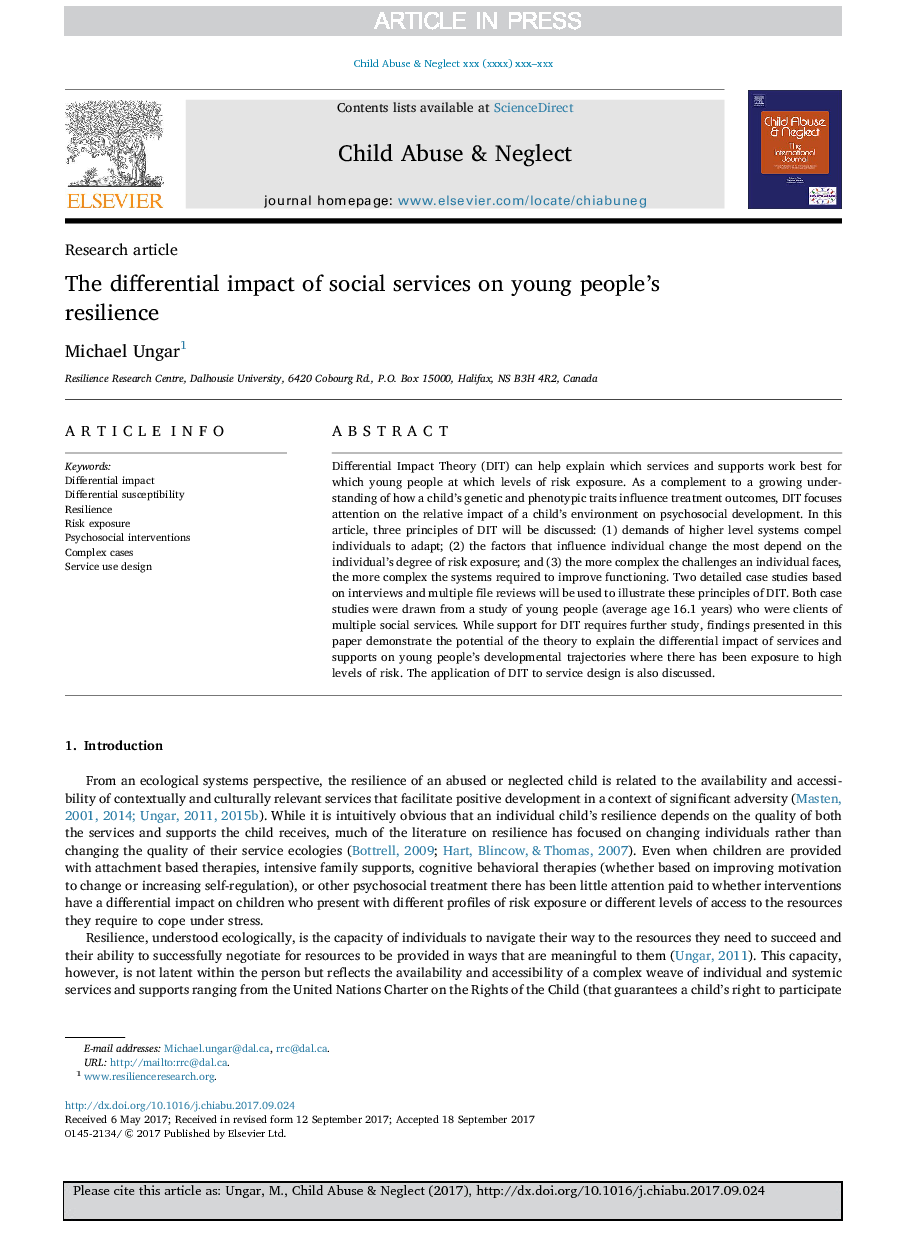ترجمه فارسی عنوان مقاله
تأثیر دیفرانسیل خدمات اجتماعی در جوانان انعطاف پذیری
عنوان انگلیسی
The differential impact of social services on young peopleâs resilience
| کد مقاله | سال انتشار | تعداد صفحات مقاله انگلیسی |
|---|---|---|
| 156106 | 2018 | 9 صفحه PDF |
منبع

Publisher : Elsevier - Science Direct (الزویر - ساینس دایرکت)
Journal : Child Abuse & Neglect, Volume 78, April 2018, Pages 4-12
ترجمه کلمات کلیدی
تاثیر دیفرانسیل، حساسیت دیفرانسیل، انعطاف پذیری، قرار گرفتن در معرض خطر، مداخلات روحی اجتماعی، موارد پیچیده، طراحی استفاده از خدمات،
کلمات کلیدی انگلیسی
Differential impact; Differential susceptibility; Resilience; Risk exposure; Psychosocial interventions; Complex cases; Service use design;

